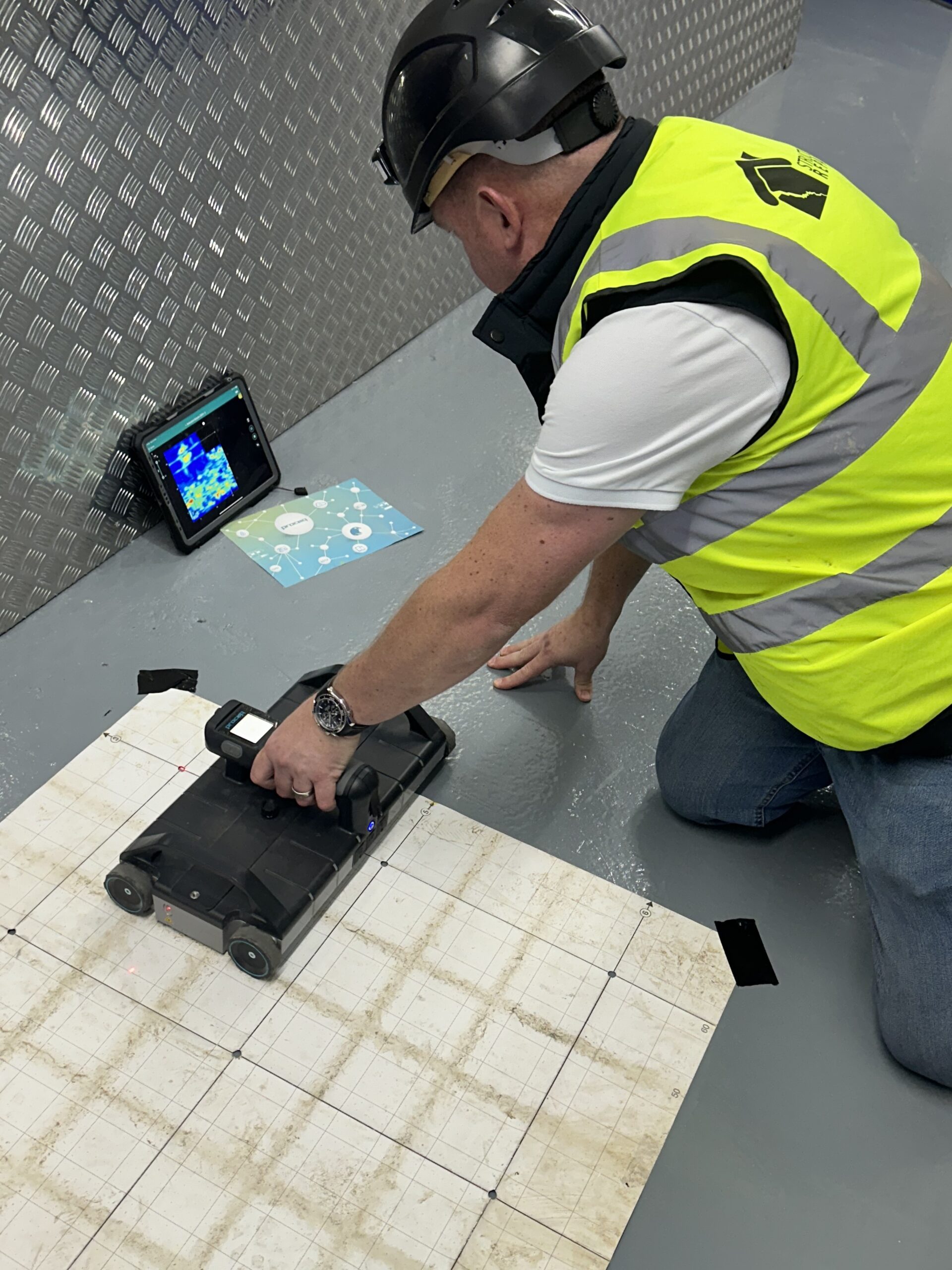Professional Tips for Optimum Concrete Scanning Results
Professional Tips for Optimum Concrete Scanning Results
Blog Article
Reveal the Transformative Power of Concrete Scanning in Maximizing Performance and Safety And Security
Concrete scanning has emerged as an essential device in the construction industry, offering exceptional advantages in enhancing task effectiveness and making certain security standards. The transformative power of concrete scanning lies in its ability to offer real-time information and detailed understandings, reinventing exactly how projects are intended and performed.
Value of Concrete Scanning
Making certain the structural honesty and safety of building jobs starts with the important action of carrying out extensive concrete scanning. Concrete scanning is a non-destructive technique used to spot and map subsurface components within concrete structures.
Additionally, concrete scanning assists in maximizing task timelines and budget by preventing unforeseen prices and delays that might occur due to unpredicted blockages within the concrete. Eventually, investing in detailed concrete scanning is a proactive strategy that boosts both efficiency and safety and security in building projects.
Just How Concrete Scanning Functions
Concrete scanning operates as an important tool in building and construction tasks by utilizing advanced technologies to discover and map subsurface aspects without causing architectural damages. Ground Passing Through Radar (GPR) and Electromagnetic Induction (EMI) are 2 primary methods utilized in concrete scanning. GPR jobs by discharging high-frequency radar pulses into the surface, which recuperate when they come across subsurface objects or gaps. The moment taken for the signal to return shows the deepness and area of the items. EMI, on the other hand, makes use of magnetic fields to determine variations in material compositions, such as identifying rebar or conduits within concrete frameworks.
During the scanning procedure, the information collected is assessed in real-time, enabling prompt identification of potential dangers or challenges beneath the surface. By using these sophisticated innovations, concrete scanning considerably lowers the danger of expensive problems and injuries on building and construction websites.
Benefits of Concrete Scanning
Using innovative scanning innovations in building tasks provides a multitude of benefits, enhancing both performance and safety on-site. One of the key advantages of concrete scanning is the ability to discover and situate ingrained things such as rebar, post-tension cable televisions, and conduits accurately. By recognizing these elements prior to boring or reducing into concrete structures, the threat of unexpected strikes is dramatically reduced, protecting against potential injuries to employees and damages to the structure itself. Furthermore, concrete scanning helps in preparation and creating better, as it offers accurate information about the area and deepness of architectural parts.

Study: Concrete Scanning Success

In an additional situation, a construction business utilized 3D concrete scanning to evaluate the condition of maturing concrete structures in a historic structure. The thorough scans offered beneficial understandings into the degree of deterioration and assisted prioritize maintenance efforts successfully. By proactively resolving areas of issue determined with scanning, the firm had dig this the ability to expand the lifespan of the structure and guarantee passenger safety and security.
These study underscore the transformative power of concrete scanning in improving performance, precision, and safety and security in building jobs.
Applying Concrete Scanning in Projects
Carrying out innovative scanning technologies during construction projects has actually become significantly essential for boosting accuracy and safety and security. By incorporating concrete scanning into project preparation and implementation, building and construction groups can determine prospective risks, such as rebar or post-tension cable televisions, hidden within concrete structures. This proactive strategy decreases the threat of mishaps, hold-ups, and expensive rework, ultimately resulting in much more efficient task timelines and budget plans.
To execute concrete scanning efficiently, project supervisors must work together closely with experienced scanning specialists to figure out the most suitable scanning techniques for the details job demands. Engaging scanning experts from the early phases of a task makes it possible for the group to develop thorough scanning strategies that resolve essential areas of concern and guarantee extensive information collection.
Additionally, integrating concrete scanning into routine job workflows can streamline decision-making procedures, as real-time check data offers immediate understandings into the problem of concrete structures - Concrete Scanning. This data-driven technique facilitates notified problem-solving and allows groups to make go to website adjustments immediately, fostering a society of performance and security throughout the project lifecycle

Verdict
To conclude, concrete scanning plays a vital duty in enhancing effectiveness and security in building and construction projects. By utilizing sophisticated modern technology to discover and map out underlying structures within concrete, this process helps to stop pricey mistakes, make certain structural honesty, and decrease dangers on website. With the capability to discover covert elements and provide accurate information, concrete scanning confirms to be a beneficial device for optimizing job results and making best use of general success.
Concrete scanning is a non-destructive method used to find and map subsurface aspects within concrete frameworks. Additionally, concrete scanning helps in enhancing task timelines and spending plan by preventing unanticipated prices and delays that may arise due to unforeseen blockages within the concrete. One noteworthy situation study includes a large restoration job where concrete scanning played a critical duty in guaranteeing job success.In one more case, a construction company made use of 3D concrete scanning to analyze the condition of aging concrete structures in a historic building. By integrating concrete scanning right into task preparation and implementation, building and construction teams can recognize prospective hazards, such as rebar or post-tension wires, hidden within concrete frameworks.
Report this page